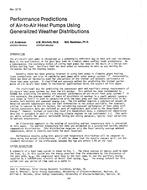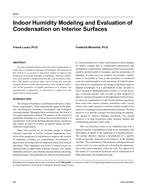Click here to purchase
Demands for higher energy efficiencies in both residential and commercial refrigeration and air conditioning systems have resulted in a trend toward coil designs that are more compact with higher capacities for heat transfer. Traditional copper tube / aluminum fin coil manufacturing technology remains prevalent throughout the industry and, when modified for smaller diameter copper tubes of 5mm (0.20 inches) or less, significant improvements in heat transfer can be achieved. Coupled with internal enhancements to the copper tubes such as microgrooves, condenser and evaporator designs can be smaller, more efficient and operate at higher pressures to accommodate new refrigerants. Higher efficiency coils require less space and can help lower costs related to the overall packaging of a refrigeration or air conditioning system.
This paper demonstrates the impact of smaller diameter copper tubes and compares heat transfer results with common tube diameters of 7mm and above. Both simulated and actual performance data is shown as well as energy-efficient design options that are available with smaller diameter copper tubes.
Copper components also offer antimicrobial properties and these advantages are discussed. In many air conditioning and refrigeration applications, the growth of bacteria and microbes is a concern. Data from bacteria studies is shown that supports the use of copper components where antimicrobial properties are required. Recent registration of copper alloys with the U.S. Environmental Protection Agency is discussed as well.
Citation: ASHRAE Conference Papers, Montreal, QC
Product Details
- Published:
- 2011
- Number of Pages:
- 8
- File Size:
- 1 file , 2 MB
- Product Code(s):
- D-ML-11-C021


